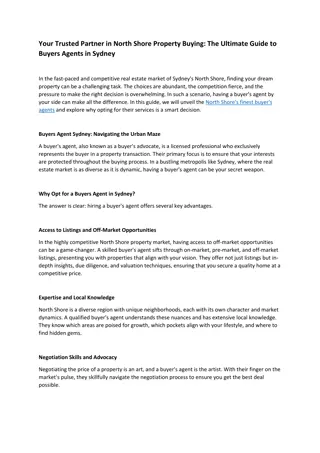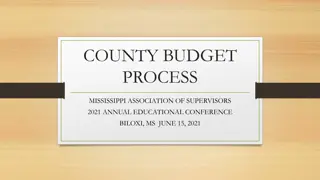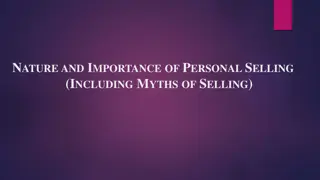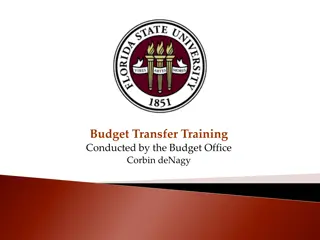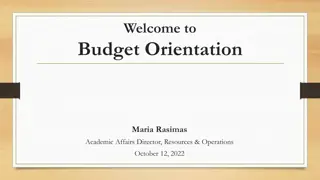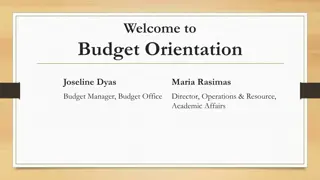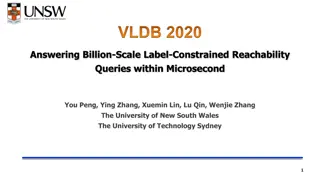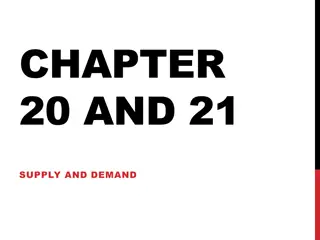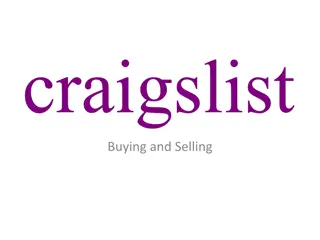Selling Information to Budget-Constrained Buyers
The images and descriptions discuss the concept of selling information through consulting, focusing on marketing, consumer information, and credit reports. Motivations for targeting budget-constrained buyers and the optimal mechanisms for selling information are explored. The content highlights models, theorems, and proof ideas related to selling information effectively, catering to the specific needs and constraints of buyers. Various scenarios and historical data are used to illustrate the importance of accurate information in decision-making processes.
Download Presentation

Please find below an Image/Link to download the presentation.
The content on the website is provided AS IS for your information and personal use only. It may not be sold, licensed, or shared on other websites without obtaining consent from the author. Download presentation by click this link. If you encounter any issues during the download, it is possible that the publisher has removed the file from their server.
E N D
Presentation Transcript
Selling Information Through Consulting Selling Information Through Consulting Shuran Zheng Yiling Chen Haifeng Xu Harvard University Harvard University University of Virginia
Market of Information Recommendation Consumer Information Credit Reports
How is information different from items? Can be partially revealed seller ? > 6 ? 6 e.g. FlightAware buyer Charge 30 ? in hours ? in minutes Charge 10 Charge 20 flight delay ?
Outline Selling information to budget-constrained buyers 1. Motivation Why budget-constrained buyers? 2. Our Results Model Main theorem Proof ideas
Motivation Babaioff et al. [2012]: buyers with unlimited budget Budget-constrained buyers
Motivation Suppose Haifeng @Boston is going to give a talk @NYC. Safe if the flight delay 4 hrs Based on historical data & weather, 0 delay 10 Wait/take a train instead No information: will take a train Knowing the exact delay, take a train only when delay > 4 Save 4/10*100 in expectation Willing to pay up to 40 delay 4 delay > 4 loss + wait 0 take a train 100 100
Motivation Suppose FlightAware knows the exact delay and wants to sell it. 2 buyers: loss prior belief buyer 1 400 [0, 7.9984] buyer 2 600 [0, 8.0016] Babaioff et al. [2012]: when delay > 4 w.p. 0.5, the optimal mechanism is to charge 250000 when delay 4, pay 249600 to the buyer when delay > 4. But the buyer s expected gain 250.
Our Our Results Results Consider budget-constrained buyers Simple optimal mechanism Compute via a polynomial-size LP Improves the previous exponential-size LP by Babaioff et al. [2012] that solves one-round optimal mechanism when there is no budget constraint Adding budget constraint makes the problem easier
Model: information buyer An unknown state of the world, random variable ? The buyer needs to choose an action ? ? that leads to utility ?(?,?) The buyer has a private type ? that represents 1. his belief about ?: a probability distribution over 2. his utility function ??(?,?) The buyer has a private budget ? that can be used to purchase additional information about ?
Model: information seller Fully observes ?, has a budget ? Knows the utility function ???,? and the distribution ? ?,?,? Goal: sell ? to maximize the expected revenue What are the mechanisms that can possibly be used?
Model: information as signals Partial information: a random variable (signal) ? that is correlated with the state of the world ? Example: binary ? = good/bad, reveals ? w.p. 2/3 ? s 2/3 ?after good good (2/3,1/3) 1/3 ? = (0.5,0.5) 1/3 ?before bad bad ?after (1/3,2/3) 2/3 Value of Information: the gain from knowing ? ??? = E?? ?after,? E?[? ?before,? ]
Model: mechanisms A menu of (partial information ? , price ?? ) The seller can interact with the buyer in multiple rounds Babaioff et al. [2012] In each round, the seller can give the buyer some information of ? (by sending a signal correlated with ?) ask the buyer for some information of ?,? (by sending a signal correlated with ?,?) charge the buyer an amount of money Multiple-round mechanisms Recommend actions to the buyer and then charge some prices Assuming the buyer maximizes his own utility
Our Our Contribution Contribution Consulting Mechanism: 1. Ask the buyer to report his type ? and deposit his budget ?. 2. For each reported ? and ?, according to ?, (randomly) decides an action to recommend and an amount of refund, the amount of which is either 0 or ? + ?. Buyers with different reported ? and ? will get different recommendations
Our Our Contribution Contribution Consulting Mechanism: 1. Ask the buyer to report his type ? and deposit his budget ?. 2. For each reported ? and ?, according to ?, (randomly) decides an action to recommend and an amount of refund, the amount of which is either 0 or ? + ?. 2/3 For each ? and ?: wait, refund ?1 good 1/3 1/3 take a train, refund ?2 bad 2/3
Our Our Contribution Contribution Consulting Mechanism: 1. Ask the buyer to report his type ? and deposit his budget ?. 2. For each reported ? and ?, according to ?, (randomly) decides an action to recommend and an amount of refund, the amount of which is either 0 or ? + ?. 2/3 For each ? and ?: wait, refund 0 good 1/3 1/3 take a train, refund ? + ? bad 2/3
Our Our Contribution Contribution Theorem:There always exists an IC and IR Consulting Mechanism that achieves no less revenue than any (possibly multiple-round) mechanisms.
Proof ideas Generic Protocol One-round Mechanism LP with exponentially many variables and exp. constraints do not know how to compute
One One- -round Mechanism round Mechanism 1. Ask the buyer to report his type ? and deposit his budget ?. 2. According to the reported ? and ?, give the buyer a piece of partial information ? and refund ?(?). LP with exponentially many variables and exponentially many constraints
Proof ideas Generic Protocol One-round Mechanism Consulting Mechanism LP with exponentially many variables and exp. constraints simple structure; LP with polynomial size do not know how to compute
Proof ideas ? ? Duality Dual LP of? Exponential-size LP for computing optimal one-round mechanism Variable transformation ? ? Duality With the same optimal objective as ? but poly-size variables Exponential-size LP which provably admits a consulting mechanism as its solution
Proof ideas ? Exponential-size LP which provably admits a consulting mechanism as its solution Two possible payments Can be reduced to a consulting mechanism
Polynomial-size LP Variables: for each ? and ? ? , probability of recommending ? ? and charge one of the two possible payments. Objective: expected revenue Constraints: Individual Rationality Incentive Compatibility
Summary Selling information to budget-constrained buyers Simple one-round optimal mechanism: consulting mechanisms Compute the optimal mechanism via a polynomial-size LP






